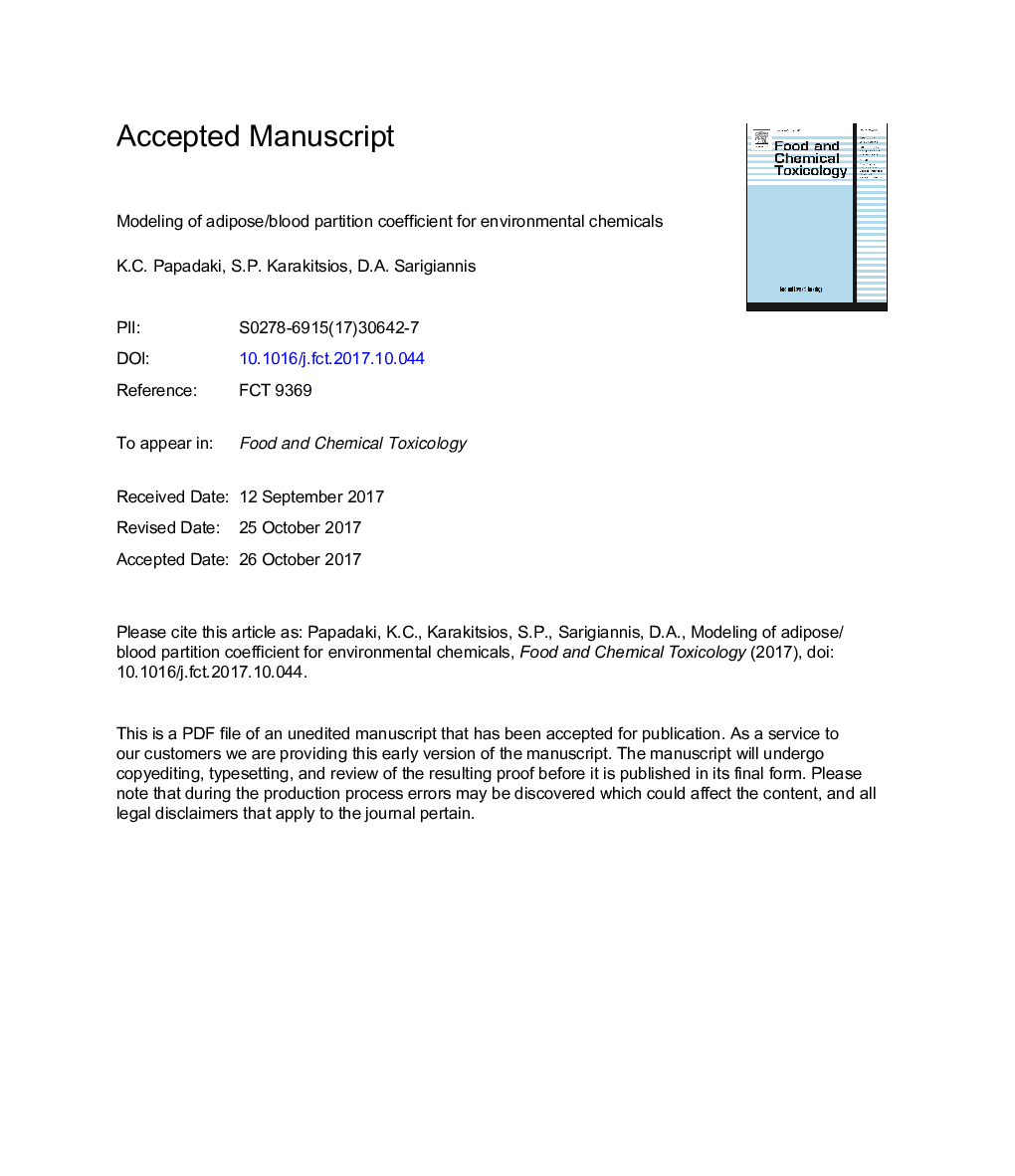| Article ID | Journal | Published Year | Pages | File Type |
|---|---|---|---|---|
| 8548613 | Food and Chemical Toxicology | 2017 | 35 Pages |
Abstract
A Quantitative Structure Activity Relationship (QSAR) model was developed in order to predict the adipose/blood partition coefficient of environmental chemical compounds. The first step of QSAR modeling was the collection of inputs. Input data included the experimental values of adipose/blood partition coefficient and two sets of molecular descriptors for 67 organic chemical compounds; a) the descriptors from Linear Free Energy Relationship (LFER) and b) the PaDEL descriptors. The datasets were split to training and prediction set and were analysed using two statistical methods; Genetic Algorithm based Multiple Linear Regression (GA-MLR) and Artificial Neural Networks (ANN). The models with LFER and PaDEL descriptors, coupled with ANN, produced satisfying performance results. The fitting performance (R2) of the models, using LFER and PaDEL descriptors, was 0.94 and 0.96, respectively. The Applicability Domain (AD) of the models was assessed and then the models were applied to a large number of chemical compounds with unknown values of adipose/blood partition coefficient. In conclusion, the proposed models were checked for fitting, validity and applicability. It was demonstrated that they are stable, reliable and capable to predict the values of adipose/blood partition coefficient of “data poor” chemical compounds that fall within the applicability domain.
Related Topics
Life Sciences
Agricultural and Biological Sciences
Food Science
Authors
K.C. Papadaki, S.P. Karakitsios, D.A. Sarigiannis,
